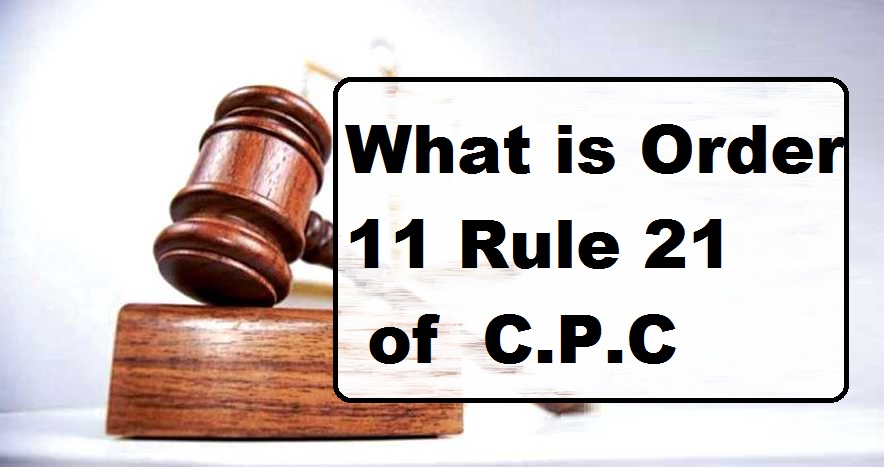
What is Order 11 Rule 21 of C.P.C
Allows excellent at judication shortens the time of lightning and bring finality to the matter
This important provision of the CPC 1908 relates to the discovery of a relevant document and the answering of interrogatories by all the sides to a civil dispute brought Before any Court of jurisprudence where the right of the parties are in dispute and need to be adjudicated Edward upon.
After you, a free message needs to be stressed before we go further. They deal mainly (wakeelistan) with the misconception on the part of the litigants. the normal belief is that the inconvenient evidence can & must be hidden. Tekkali non-production of the same will lead to delays and the guilty party is the major beneficiary of protracted proceedings thereby it is reluctant to produce documents and answer interrogative release.
Even though our system is adversarial, the basic function of the court is not to pass its judgments, give orders 9 issue decrees. It is to find the truth. This may sound incredible but there is the fact. Without determining the truth no judication is worth the paper it is written on.
Then again the quotes look for two things
1: To adjudicate as quickly as possible and
2: to bring finality to litigation.
There we find that practice seems divorced from the intent and common perception.
This is where order 11 rule 21 of the CPC 1908 is of paramount importance. Litigation begins with the party’s aggrieved honesty or with ulterior motives. It Moves the code with the intention of determining rights. the defendant i.e the other party, either submit to the plaintiff’s claims or disputes them either in part or in Toto. 1 then has to prove one case.
The best form of evidence is documentary followed by secondary evidence witness dispositions and Discovery. The requirement is that all possible evidence must be (wakeelistan) presented to the court & that too at the first instance. This means that the plaintiff must submit all relevant evidence in his position with the plaintiff & this includes evidence that may be adverse to his claims.
Similarly when the defendant filed his written statement hi to must present at first instance all the evidence in his position including that which is not in his interest. Unfortunately, that home truth is lost on both the litigants & their Advisors. To speed up the process and reach the final ATI of litigation there is also the provision of each party asking the others a set of questions dealing with the matter on hand.
A request to the court which is the final arbiter loses the other side on sir’s questions allows the questioner to determine those points of conflict and those of commonality. The process narrows down those areas of dispute and the framing of issues. There is some doubt on the matter of interrogatories and the production of documents. The text says that a notice to either the Advocate or solicitor is sufficient to elicit a response full stop one must understand that his exercise is not the same that must advocates Resort to when they check the veracity of copies against the original.
This effort is different in the sense that the opponent’s question seats information about concealed documents and Ms information on information that would Prove the questioners’ case. March against common belief the compulsion of demanding production is a legitimate and important right of the litigants. To hijack comments to destroy inconvenient proofs are illegal activities.
The next argument is that what the process should be if the opposite side refuses. The simplest way is to convince the court of the need for answering the interrogatories and the production of documents. An order of the court needs is obeyed full stop refusal to heat the order is to invite the worth of the court under order 11 rule 21 of the CPC. It deals with both parties the plaintiff and the defendant and their respective truculence. Non-compliance allows the court to draw Edward interference. He fitted in his suit with the dismissal of the same.
He is not allowed to appeal the dismissal (basic law) nor can he file another suit in the same cause of action. The court in this type of case finds for the defendant in permanence. on the other hand intransigent defendant loses his right to defend his case. The court proceeds as if the defendant has presented no defense and is considered ex-party. Is Defence if presented is struck off and the suit determined without any parking by the defendant. He is not allowed to examine the witnesses 9 argue the matter will stop it is as if the defendant did not exist.
The court has been advised to come down on the litigants with great care and caution and not to wield order 11 rule 21 without due application of mind and patience.